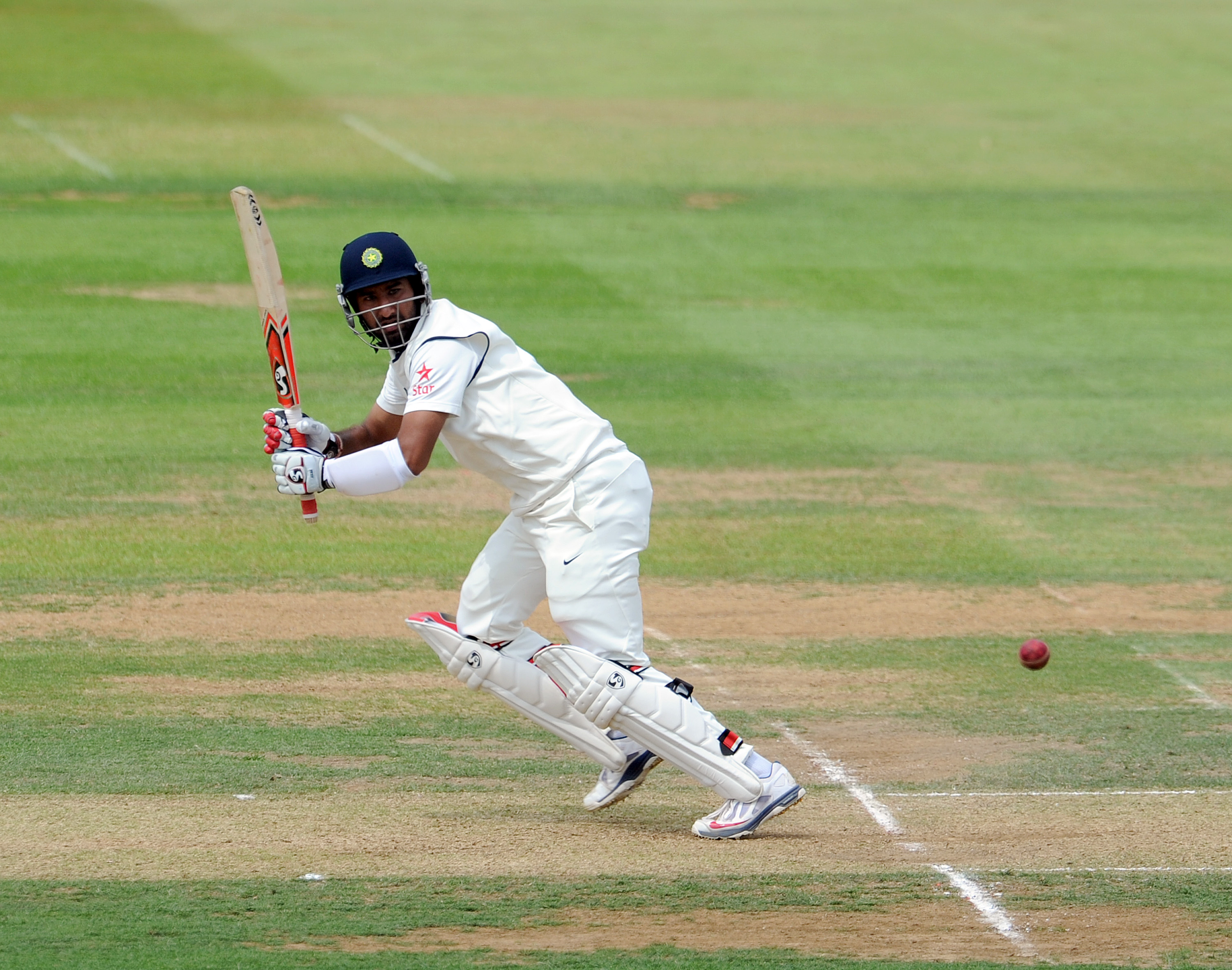Cheteshwar Pujara – a batsman reborn from the ashes
After being hailed as India's next Rahul Dravid in the early days of his career, Cheteshwar Pujara's career graph went downwards in 2014 and 2015. But the Saurashtra batsman has found his way back under Anil Kumble's guidance to become India's best performer in recent times.

After members of that great 2000s Indian Test team hung their boots one by one, the selectors have been successful, to an extent, in finding replacements. They were able to unearth Virat Kohli in 2008 and groom him just in time for Sachin Tendulkar's retirement in late 2013. They have been successful to bring in someone like Murali Vijay to open the innings for India right when Gautam Gambhir's powers started to diminish. With the all-round abilities of Ravichandran Ashwin and Ajinkya Rahane's technical arsenal, Team India have found a way to hold the lower order like the graceful VVS Laxman. But the biggest issue was their difficulty in developing the next No.3, someone who could reach the astronomic standards set by Rahul Dravid over 16 years.
In came Cheteshwar Pujara during the home Test series against Australia in 2010 and his timing was not bad at all. Rahul Dravid was in the twilight of his career and there was this kid from Rajkot who possessed a similar old school technique. Heads nodded in approval as the debutant orchestrated India's 7-wicket victory against Australia with a well-paced 72 in the 2nd innings.
Despite playing just one Test for India in all of 2011, Rahul Dravid's retirement in March 2012 opened the doors for Pujara and he grabbed the opportunity with both hands. “A bowler has to work really hard to get his wicket. That quality I admire a lot because even I don't like to get out.” These were the words Pujara spoke about Dravid in 2012, after the legendary batsman announced his retirement. And he certainly seemed to have inculcated the philosophy in his game too.

 © BCCI
© BCCIA brilliant 159 in the first innings of the first Test against New Zealand set up an innings victory for India and his tally of 438 runs in next home series against England was among the few positives for India in a demoralizing 2-1 home series loss. He then followed it up with a double-century against Australia and then two more centuries against West Indies and South Africa with his century at Johannesburg almost winning the match and series for India. His batting was mostly about patience and precision more than rushing into drives and this prompted many to hail him as the next Rahul Dravid.
But all of a sudden, everything seemed like a distant dream for the right-hander in 2014. India lost three straight away series against New Zealand, England and Australia with Pujara contributing nothing significant with his batting. After recording batting averages of 81.74 in 2012 and 75.36 in 2013, slumping to 25.50 in 2014 was piling pressure on the batsman. The first three years of brilliance all seemed like a false dawn for Pujara as his spot was soon taken over by either Rohit Sharma or Ajinkya Rahane in 2015.

 © Getty
© GettyDespite impressing as a makeshift opener in the third Test against Sri Lanka in August 2015 by scoring a century, being dropped from the first two Tests in the series had a huge impact on the Rajkot local. Even with India winning the series against South Africa by playing on rank turners, Pujara's game was hardly inspiring. He looked devoid of confidence, his technique was shoddy and playing spin bowling, which is one of his big strengths, was a cause of concern for captain Virat Kohli.
But the Saurashtra batsman has truly turned a corner after Anil Kumble was appointed as India's head coach. Pujara's slow approach drew criticism with many asking him to be dropped from the team. But Kumble sent an indirect message for the detractors ahead of the West Indies Test series by naming “changing mindset”, “batting time” and “being boring” as his plans to improve India's performances. Pujara once again registered low scores of 16 and 46 in the two innings he played on the tour, but it was clear that he was in Kumble's plans.
“I have spoken to him [Anil Kumble], he told me about a few things which obviously I cannot disclose here. He has been very positive with the way I have batted in the past and contributions I have made. And he is very happy with the way I have been batting,” Pujara said in one of the press conferences.
Kumble's mantra for Pujara was to focus on the team's situation, and play accordingly. It is also evident from the recent pressers the Indian No.3 has been giving. If the 28-year old is not satisfied with his performance on the day, he speaks mainly about the team's focus and their plans for the next day. And the New Zealand series was a great example of how this positive thinking has helped his gameplay.

 © Getty
© GettyWith niggling injuries to regular openers and poor performances from their replacement Gautam Gambhir in the New Zealand series, Pujara has played the anchor role to perfection. Combining with Murali Vijay, Pujara was happy to settle down and grind the bowlers thus helping to wear down the shine on the ball to make it easy for Virat Kohli and Ajinkya Rahane to walk in and dominate. He played 164.5 overs across six innings in the New Zealand series, by scoring three consecutive fifties and a well-paced 101 not out that set up India's victory in the final Test at Indore.
His ability to adapt to pitch conditions has further proved how much he has improved over the past six months. For example, Mitch Santner got the better of Pujara in the first innings of the third Test at Indore. The Kiwi spinner pitched the ball slightly outside the off stump and the turn on the pitch did the rest when Pujara tried to play it on the front-foot. Pujara immediately tweaked his technique in the second innings by increasing his stride and playing the ball as quickly as possible to cut the turn. Santner was unable to come up with fresh ideas, while Pujara rode to his century easily.
Unlike the series they played in 2015, India played on more competitive tracks this time, but Pujara's approach was full of confidence. Despite Virat Kohli getting much of the spotlight for his captaincy and his double century in the final Test against the Kiwis, Pujara was arguably the best performer with the bat.
In the current series against England, he has picked up where he left off by scoring a hundred at his home ground in Rajkot and one more in the second Test at Vizag. On each occasion, Gambhir fell early and it was Pujara's duty to steady the ship alongside Vijay or Kohli. He took a few hits from the England pacers at times, but his focus and concentration never wavered.
When quizzed about this slow approach, Pujara was ready with the answers. " When it comes to Test cricket, we don't need to focus much on strike rate. It's about having a positive intent. Overall, on such wickets, obviously, you can't keep scoring runs at strike rates above 70-80. You have to play according to the situation, know what the team requires, what number you're batting at,” he gave a calm and fitting reply to people who were now after his approach after looking at his improved performances.
Pujara is no Rahul Dravid. But he has developed the temperament and mindset of someone who can deliver consistent performances despite not having the spotlight on him - much like Dravid in his best days.

Comments
Sign up or log in to your account to leave comments and reactions
0 Comments